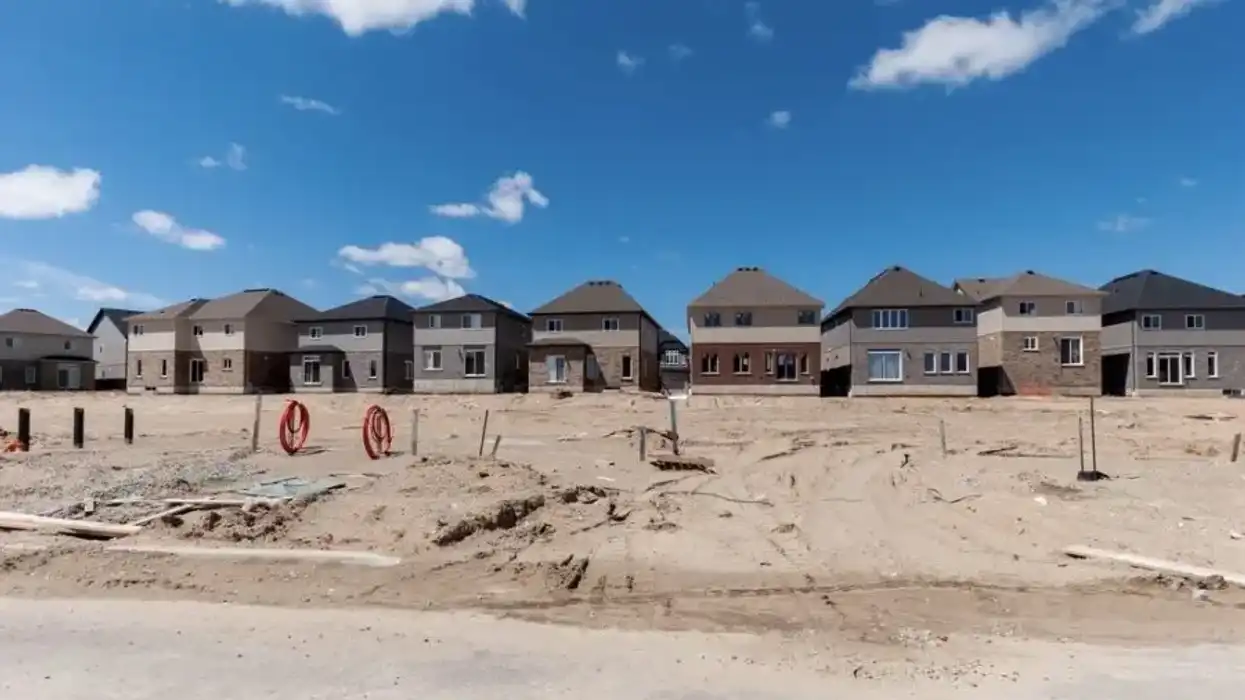Ontario saw 96,080 housing starts in 2022, according to figures provided by the Ministry of Municipal Affairs and Housing.
This is not an insignificant number. The provincial government projected 86,900 total starts to come in 2022, later downgrading that figure to 86,600. Still, as Housing Minister Steven Clark tells STOREYS, it doesn't bode overly well for Ontario’s ambitious new homes target.
"You can do the math, having near-100,000 starts is not going to get us to that 1.5M homes by 2031 that we promised Ontarians," he says.
Clark adds that "bright spots" were observed in some of the larger Ontario cities, including a 16% increase in starts in the City of Toronto, 7% in the City of Ottawa, and strong increases in both Mississauga and Brampton. Additionally, purpose-built rental starts were up about 7.5% from the year prior.
"I am encouraged by some of the numbers," he continues. "And we're very close to the 100,000 mark that we were in our record year of 2021, I've just got to keep the numbers moving."
RELATED: How Much Housing Supply is Really Needed in Ontario?
Nonetheless, if new home construction fails to pick up in a meaningful way, the province will fall short of its target by several hundreds of thousands of units. In newly-released data for populations of 10,000 and over, the Canada Mortgage and Housing Corporation (CMHC) pegged Ontario's total 2022 housing starts as being just shy of 92,000 -- less than, but in the neighbourhood of, the Ministry's figure.
“The [CMHC] numbers aren't surprising,” says Richard Lyall, President of the Residential Construction Council of Ontario. “Our starts have stayed up, but part of that is because we have a lot of projects in the pipeline, a lot of buildings that have been sold already.”
In Lyall’s view, the province needs to be aiming for somewhere in the realm of 150,000 housing starts per year. But getting there, he cautions, will be heavily reliant on sales.
“If those numbers are dropping, then eventually, the supply levels will drop,” he says.
As we know, home sales took a nose dive in 2022 as Canadians found themselves grappling increasingly with affordability challenges in the high interest rate environment.
By December, sales activity was down 41.3% year over year, sitting 30% below the five-year average and 28.4% below the 10-year average, according to the Ontario Real Estate Association. Meanwhile, sales recorded over all of 2022 were down 32.3% compared to the same measure in 2021.
Earlier this month, the Canadian inflation rate edged down nominally, but yet another interest rate hike -- this time of 25 basis points, announced earlier today -- points to a prolonging of housing affordability challenges in Ontario.
“Inflation and interest rates need to stabilize to really stabilize the housing market,” says Lyall. “The other thing is, we've got to get our costs down, and a huge part of our costs are systemic -- they’re government-imposed costs. For example, in the Toronto area, about 30% of the cost of new housing is taxes, fees, levies, and development charges.”
He adds that costs like these are dissuading first-time homebuyers from realizing home purchases in Ontario, and in a growing number of cases, prompting them to leave the province entirely.
Such challenges notwithstanding, Ontario saw some major policy moves in 2022 geared at getting the province closer to its goal of 1.5M new homes by 2023. This includes the hotly-contested Bill 23, aptly named the “More Homes Built Faster Act.”
RELATED: “A Very Strong Message”: Industry Pros Weigh in on More Homes Built Faster Act
"I think the provisions in More Homes Built Faster to incent a reduction in development charges is hopefully, in my opinion, going to keep things moving and keep more purpose-built rental starts happening in this very challenging economy," says Clark. "I think it's in the right direction."
Additionally, 2022 saw numerous changes to Ontario’s Building Code, which now extends to permit the construction of 12-storey mass timber buildings and allow for streamlined multi-unit building approvals. Meanwhile, the Non-Resident Speculation Tax was increased from 15% to 20% in an effort to dissuade non-resident investors from monopolizing housing stock.
"What I want, at the end of the day, is to create the right conditions for when the economy does change so that we can get shovels in the ground,” says Clark.
While Lyall is in agreement that such public policies are promising, he voices concerns about follow-through.
“Last year, we had these massive changes announced for new housing development, but they have yet to be implemented,” says Lyall. “You can have the best plans in the world, but if you can't implement them, they’re worthless.”
He adds that there needs to be more urgency if the province hopes to reach its lofty building targets and properly cater to the existing and forthcoming populations.
“I can't underscore how quickly we need to act on this, because the immigration is coming -- it's here, the foreign students are here, there are a lot more coming,” he says. “The problem is real, it's been identified, the solutions are real and doable. It's just a question of getting this organized and getting it done. We're at the end of the beginning of this process. We've got a huge amount of work to do.”





















